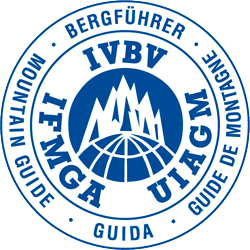New Routes in the Canadian Rockies
Every day’s a road trip, as we thread our way through the beautiful mountains of the Canadian Rockies in search of ice. On the way back from 'Nothing But The Breast' a David Thompson Highway 'classic' (above) we pull up 13km east of the Saskatchewan River Crossing, off the famous ‘Icefields Parkway’
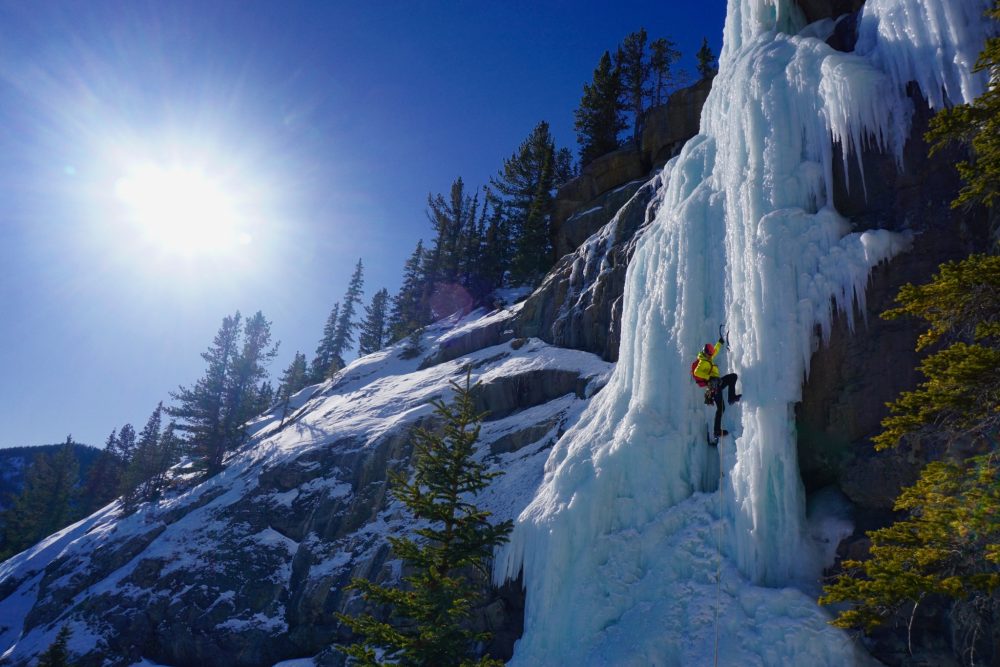
The Icefields Parkway is a road that threads its way through the spectacular Rocky Mountains, parallel to the Continental Divide and linking Lake Louise and Jasper in Alberta.
It is one of the most scenic drives you’ll ever make. Quiet in winter, with snow on the road elk grazing and Lynx wanering alon! But bumper to bumper traffic in spring and summer, when you can spot grizzly bears and their cubs, black bears and other wildlife that the Rockies is famous for.
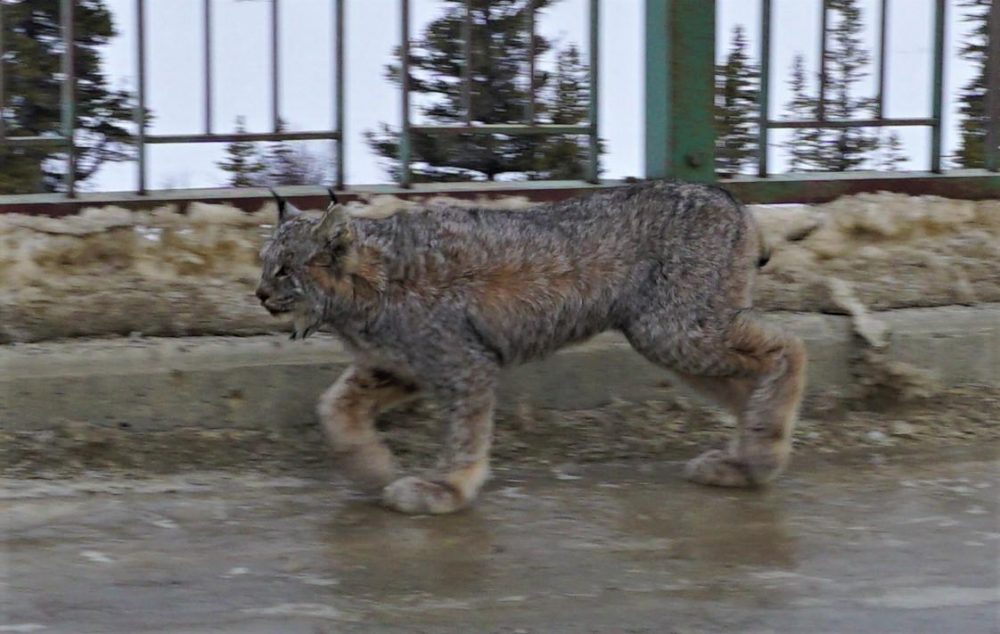
In winter we strain our necks trying to spot ribbons of blue ice out of the car windows - between the trees, above the tree line and in far off valleys as we drive the 230km in search of ice.
We pull off to the side of the David Thompson Highway and get out our tired looking binoculars and focus the lenses southwards and onto a far off image of what looks like some blue ice. It’s only a small glimpse, but is it ice, does it extend out of sight and could it be an unclimbed line?
We head back to Lake Louise excited to find out more. We go into the local book shop and start sifting through the map section to help get our bearings. The name of the creek and the surrounding summits all start to unfold.
Some other climbers enter the shop and we fumble the map back into the rack and close our guidebook. They come over and we start chatting. I change the conversation onto the fragile snow pack and strong winds that have accompanied all the snow that’s fallen this winter. We chat about about routes 'in' condition, then we shake hands, I reiterate the need to be safe and we say goodbye.
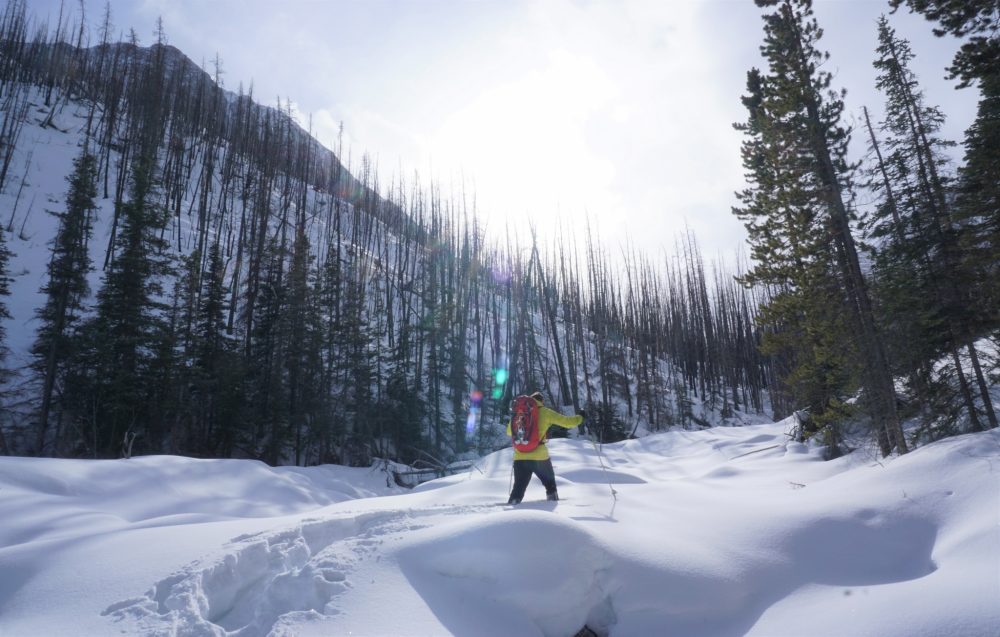
Next day, we’re parking up 13km east of the Saskatchewan River Crossing on the David Thompson Highway. Snow shoes and head lamps on, we attack the first 150m of knee deep snow and fallen trees seriously restricting our progres to the frozen river. The ice looks thin! We take our packs off and uncoil a rope. Dean heads across tied onto the end of the rope which will act as a life line if the river is more than just waist deep. Then I tie the packs onto the other end of the rope and follow. I hook my arm around the rope and lock it close to me and slowly, as if I’m walking on egg shells, follow. The rope runs steadily through under my arm as I walk forward, with the rope weighted behind me by the back packs, still in the snow on the river bank. I can see bubbles of water moving beneath the cracked blue ice lit brightly by the pool of light from my headlamp. I look up and the black sky is full of stars, the only light polluting the view is from our headlamps. I get to the other side and we drag the backpacks over the ice to us, coil the rope and head off in the direction of the valley bottom.
The terrain opens up and it’s relatively flat with fewer trees and just the odd fallen one making progress a little easier. My mind wanders as I very slowly break trail in the deep dry snow.
The Rockies has had a real problem with the Pine Beetle destroying forests and I wonder if the Pine Beetle has been here too. Last winter was one of the coldest on record, with temperatures regularly at minus 30 degrees. I don’t think the beetles like those temperatures and wonder if many of the beetles have died.
We change position trail breaking. It’s exhausting work. The ski poles don't really help in the deep snow and lifting a leg and snow shoe over each section of virgin snow each step is physical. Headlamps off and the sun, just behind the high summits close by, lights up the early morning sky. We shed layers and continue through some now very dense pine forest following a faint line towards the valley bottom where we believe a creek will flow. We plan to hit the creek and then pick our way up the creek bed.
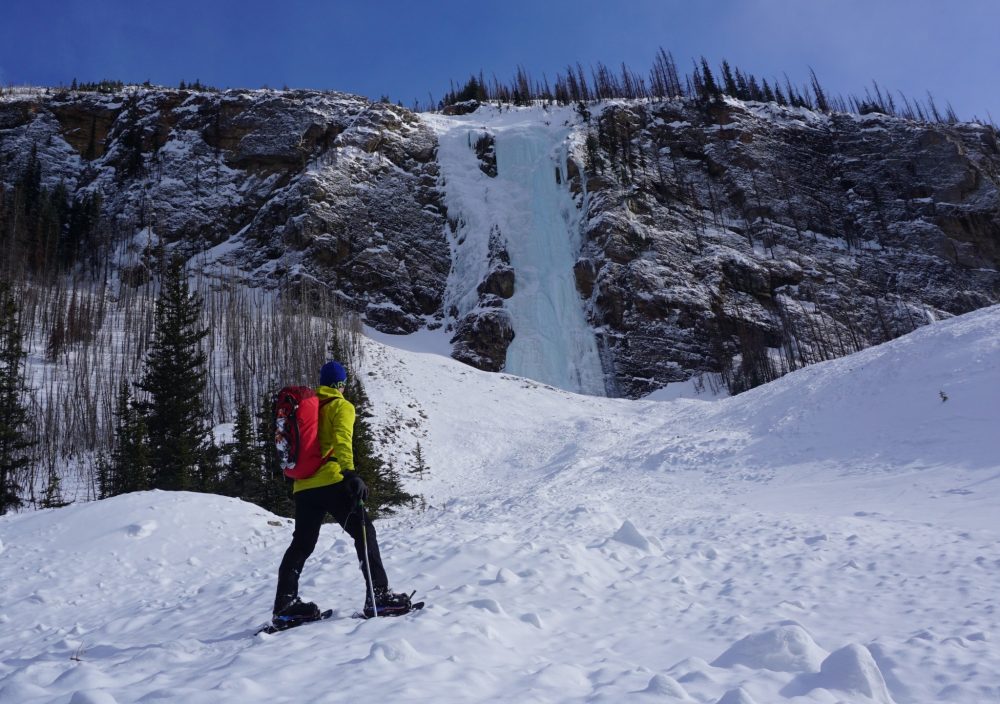
We stop at the edge of the creek. It is blanketed with fresh snow, shaped by huge boulders and dead treefall. We can hear the sound of moving water below the snow. Heads down we start up the creek bed, breaking a deep trail in the snow, trying to avoid the boulders, and find the best way forward.
It is totally exhausting, but we look up and get a glimpse of the ice on the left bank of the river. It’s complete and is about 100m long. We look at each other and smile, which is all I have the energy for right now. We continue up, taking it in turn to break trail and after six hours we reach the avalanche cone at the bottom of the ice.
We’re both tired but there’s still time in the day, so we kit up and walk to the base of the flow of fantastic blue ice. We can see two independent lines of ice - two potentially unclimbed routes. We look across to the other side of the valley and see another easier angle flow of ice in a deep canyon. Three possibly unclimbed lines. Amazing!
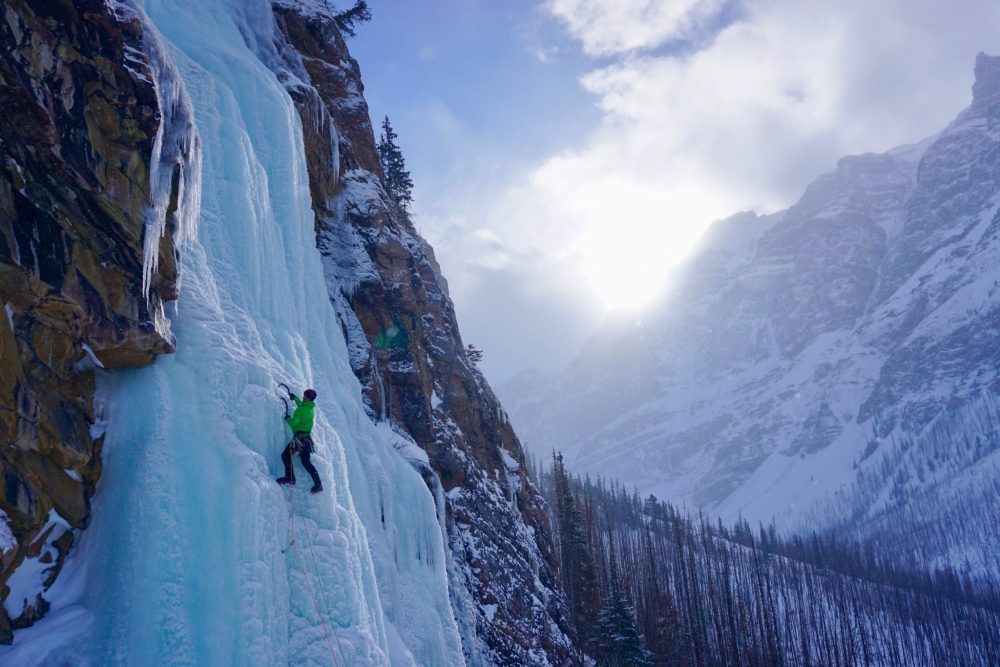
The sun is starting to dip behind the high summits to the west as we head up the first pitch. It’s an incredible feeling to be exploring a potentially unclimbed flow of ice in an untapped winter venue like this, especially as the route looks amazing and there’s more than just the one here.
The climbing is fantastic, a great WI4 initial 55m pitch of quality ice up to a steeper 30m curtain of ice, which we climbed from an ice cave belay on the left.
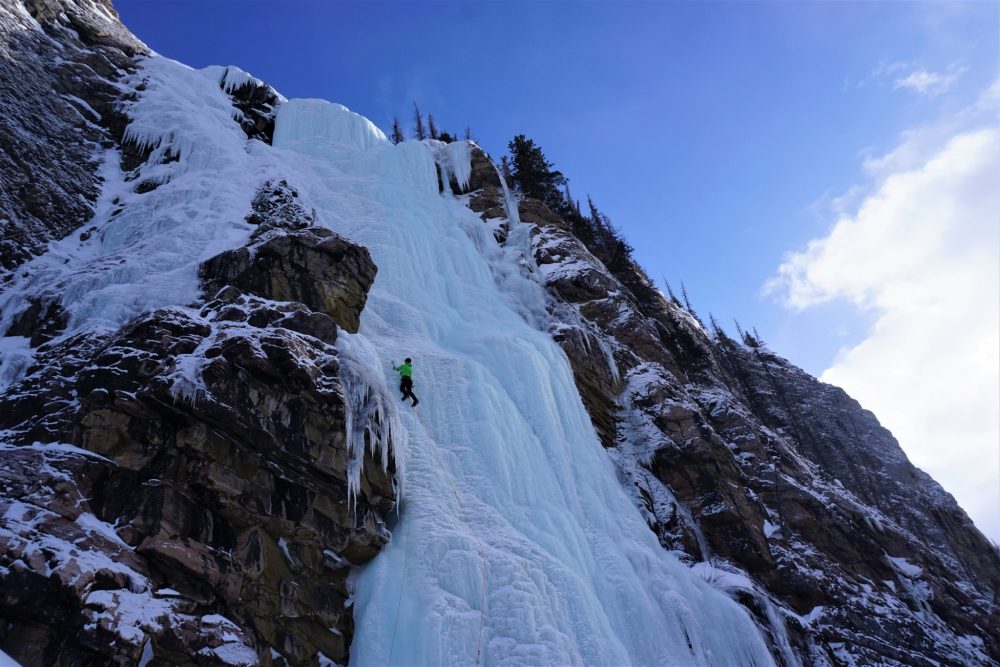
We drill ‘V’ threads in the ice and abseil back down in two pitches, collect our gear and head back down the creek to the car. It still takes 3.5 hours to walk out, following the track in. The wind had blown new snow into the track making it hard work.
Strangely, the creek is called ‘Corona Creek’ and the rocky summit that feeds the ice is called Corona Ridge! All very apt in the middle of the pandemic that is just beginning.
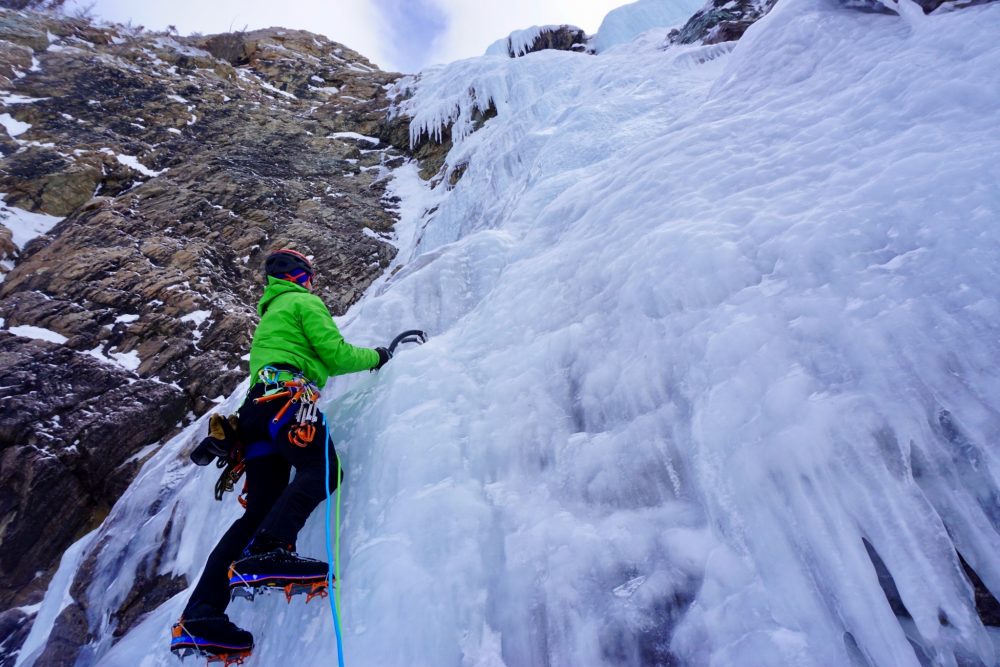
Later that week, we went there a couple more times and climbed all the new routes we had seen, which was pretty exhausting! It’s rare to find unclimbed ice in the Canadian Rockies and be able to make first ascents. I’ve been lucky enough to have had that great fortune before. This was my eighth first ascent in the area over the past 20 years, which has been amazing.
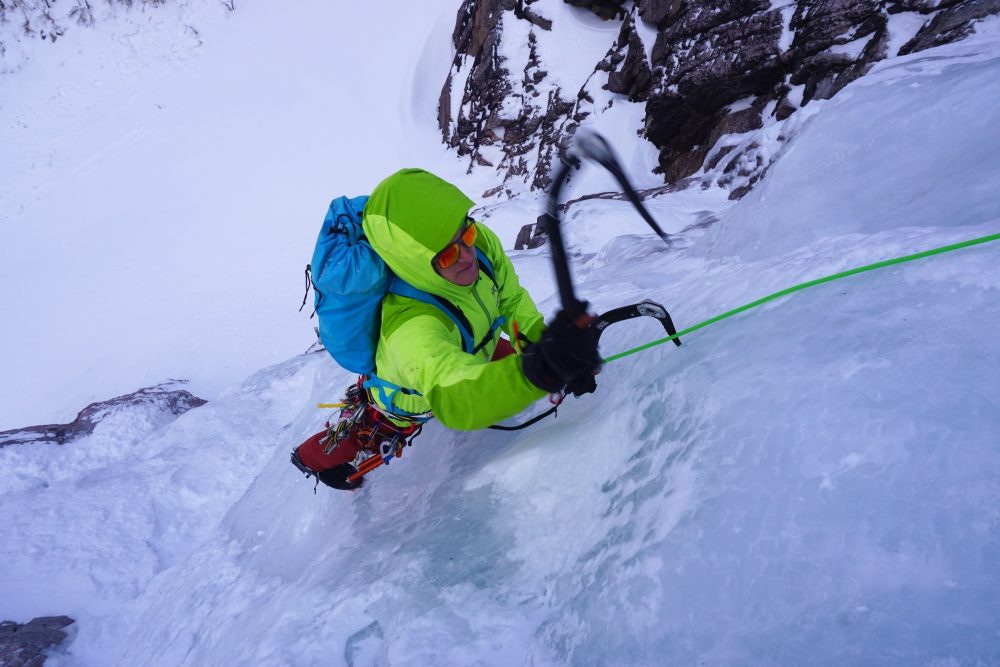
The ice conditions in the Rockies this winter were fantastic, with a number of routes that don’t normally form in condition. It was great to be able to climb a couple of routes that I’d not climbed on previous trips. It helps with my motivation and excitement planning future trips. I am already looking forward to next winter!
Stay safe in these unprecedented times of the pandemic we’re all experiencing.
Adrian Nelhams
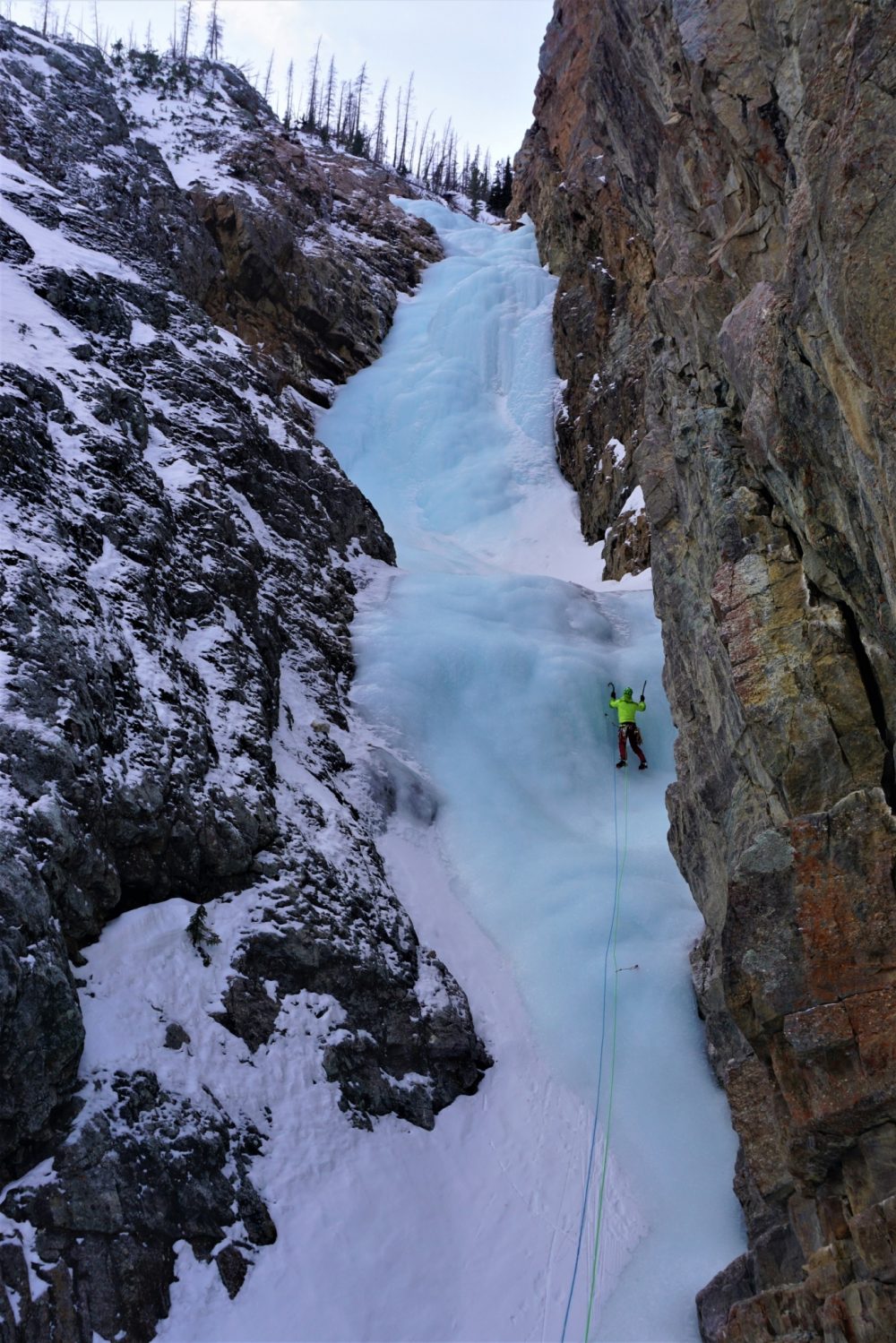
Related News Articles

ISM Virgin Peaks Expedition 2024 - Tien Shan Kyrgyzstan
ISM trip report of our trip into a very remote part of the Tien Shan Mountains, Kyrgyzstan
Read Article
Getting Into & Developing Your Climbing
Indoor bouldering is a great place to start if you want to try climbing for the first time. You can…
Read Article
ISM Virgin Peaks Expedition 2023 – Tien Shan Kyrgyzstan
ISM trip report of our trip into a very remote part of the Tien Shan Mountains, Kyrgyzstan.
Read Article
Kyrgyzstan Faces 2022
This year ISM celebrated 25yrs of expedition climbing in Kyrgyzstan, with a fantastic trip to the Fergana Range in the…
Read Article
